Scaffolding is an essential construction component, providing temporary support and access to workers as they build, repair, or maintain structures. Selecting the right type of scaffolding is crucial not only for the safety of the workers but also for the efficiency and cost-effectiveness of the project.
With various scaffolding types available, each tailored to specific tasks and environments, it’s important to understand the unique features and benefits. This guide will walk you through 11 common types of scaffolding used in construction, helping you determine which is right for your next project.
Types of scaffolding used in construction
Effectively managing high-risk construction involves a comprehensive approach that includes thorough planning, strict adherence to regulations, ongoing training, and implementing practical safety measures such as scaffolding and temporary fencing. These elements work together to create a safer and more secure worksite.
Suspended scaffolding: Ideal for tall structures
When working on tall buildings, suspended scaffolding is often the preferred choice. This type of scaffolding is hung from the top of a structure using ropes or chains and can be raised or lowered as needed. Suspended scaffolding is particularly useful for painting or window cleaning tasks, where workers need to access vertical surfaces at varying heights.
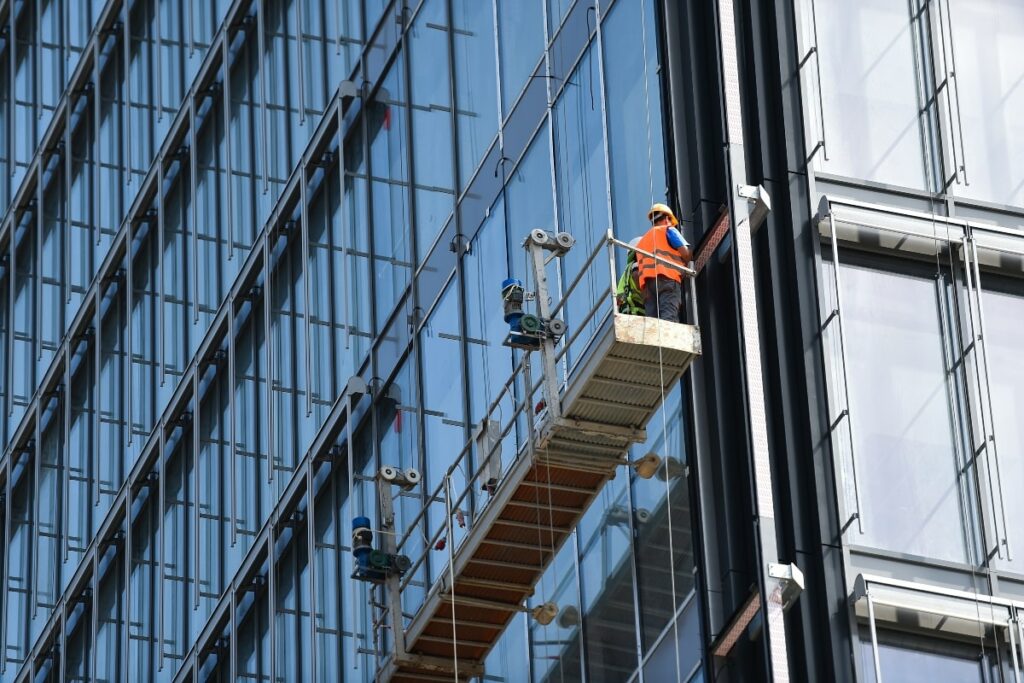
Key features and uses
- Suspended scaffolding is known for its adjustable height and ease of vertical movement. Workers can quickly move the platform up or down as needed, which is particularly useful for frequent repositioning tasks.
- Suspended scaffolding is also less intrusive on the ground level, freeing up space for other activities.
Best suited for
- This scaffolding is ideal for high-rise buildings where exterior access is necessary, such as window cleaning, exterior painting, and maintenance tasks on tall structures.
- This makes it particularly useful for high-rise buildings where traditional scaffolding might be impractical or unsafe.
Trestle scaffolding: Perfect for indoor work
Trestle scaffolding is a popular choice for indoor projects. It offers a simple yet effective solution for tasks that require access to low heights. This type of scaffolding consists of a platform supported by tripods or ladders, making it highly portable and easy to set up.
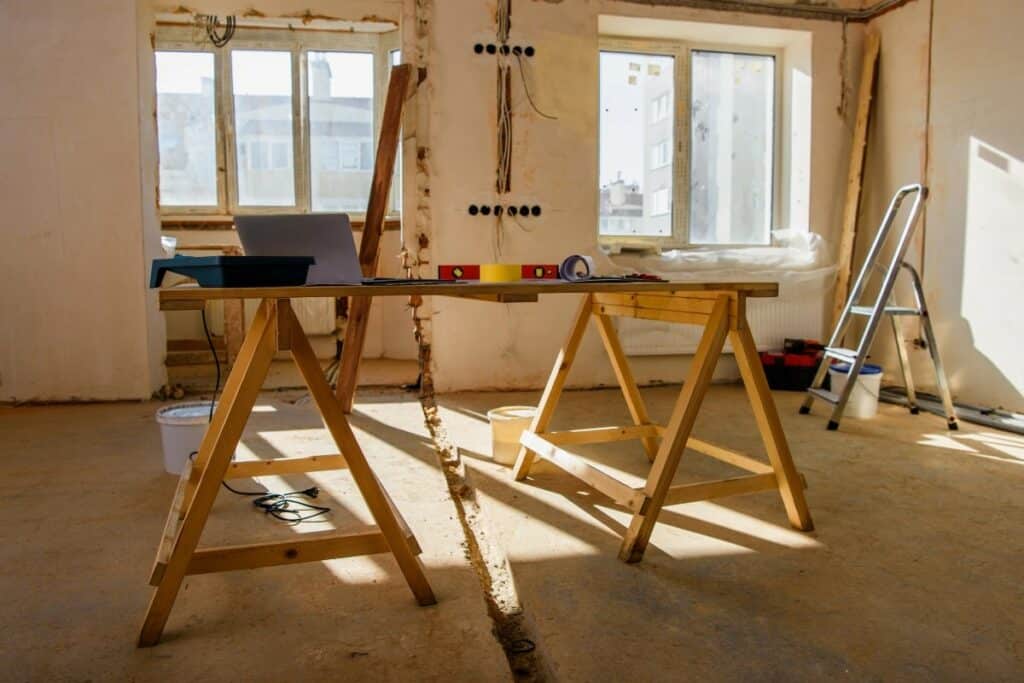
Key features and uses
- The main feature of trestle scaffolding is its portability. It can be easily assembled and disassembled, which is particularly beneficial for indoor work where space is often limited.
- Trestle scaffolding is typically used for jobs requiring elevation up to five metres, such as interior painting, ceiling work, and light maintenance.
Best suited for
- Trestle scaffolding is ideal for interior projects, including painting, electrical work, and ceiling repairs.
- Its ease of use and portability make it a convenient option for tasks that require frequent repositioning within confined spaces.
Temporary scaffolding: Flexible and versatile
As the name suggests, temporary scaffolding is designed for short-term use. It’s the go-to solution for projects where scaffolding is only needed briefly, offering flexibility and adaptability to meet various construction needs.
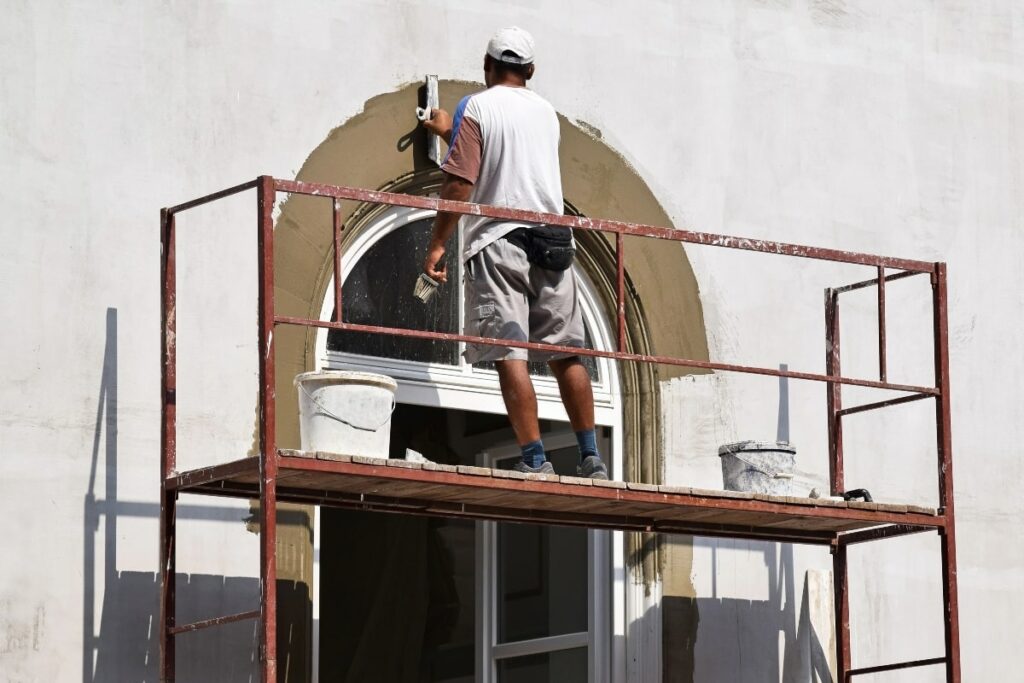
Key features and uses
- One key advantage of temporary scaffolding is its quick setup and dismantling process. This makes it ideal for projects that require fast-paced construction or repair work.
- Temporary scaffolding can be adjusted to suit different heights and configurations, providing versatility for various applications.
Best suited for
- Temporary scaffolding is best suited for short-duration tasks such as quick repairs, maintenance jobs, or any project where scaffolding is only needed temporarily.
- Its flexibility makes it a cost-effective choice for contractors who need a reliable yet temporary structure.
Mobile scaffolding: Move with ease
Mobile scaffolding is designed with wheels, allowing workers to move it around the construction site without dismantling it. This feature makes mobile scaffolding a highly convenient option for projects that require frequent relocation.
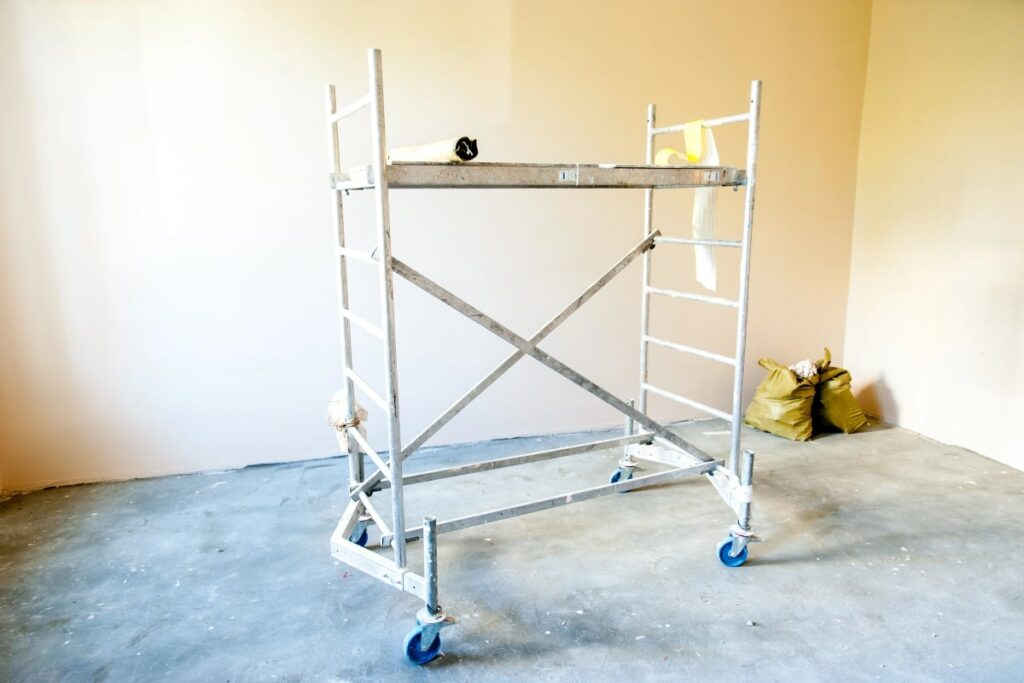
Key features and uses
- The primary feature of mobile scaffolding is its portability. The wheels are typically equipped with brakes, ensuring that the scaffolding remains stable when in use.
- This type of scaffolding is often used for tasks such as painting, plastering, or any job that requires continuous movement along the structure.
Best suited for
- Mobile scaffolding is ideal for large construction sites where workers must quickly cover extensive areas.
- It’s also useful for indoor projects where the scaffolding needs to be moved from room to room without the hassle of disassembly and reassembly.
Cantilever scaffolding: Reach difficult areas
Cantilever scaffolding is a specialised type that is supported at one end while the other is free. Cantilever scaffolding is suitable for accessing hard-to-reach areas and is particularly useful when ground support is impossible or undesirable.
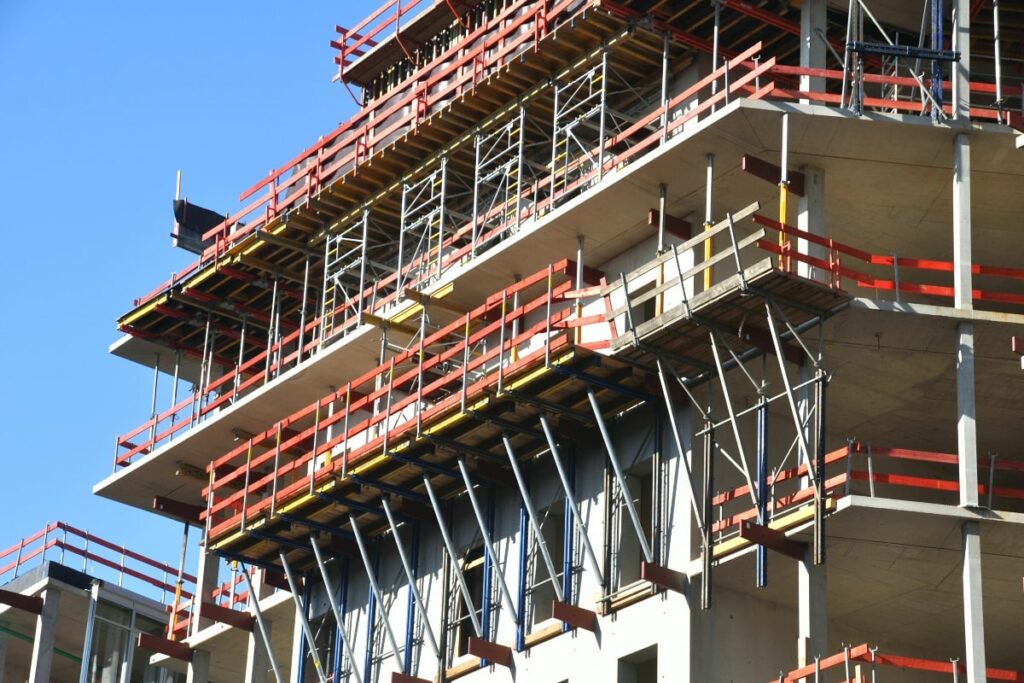
Key features and uses
- Cantilever scaffolding eliminates the need for ground support, a significant advantage when the ground is obstructed or the structure has overhangs.
- The scaffolding is typically anchored to the structure, providing stability while allowing workers to reach difficult areas.
Best suited for
- Cantilever scaffolding is best suited for projects involving bridges, overhangs, or structures with limited ground access.
- It’s an effective solution for otherwise inaccessible areas using traditional scaffolding methods.
Steel scaffolding: Strong and durable
Scaffolding made from galvanised steel is renowned for its strength and durability, making it a preferred choice for large-scale and heavy-duty construction projects. This type of scaffolding can withstand harsh weather conditions and support heavy loads, ensuring the safety and stability of the structure.
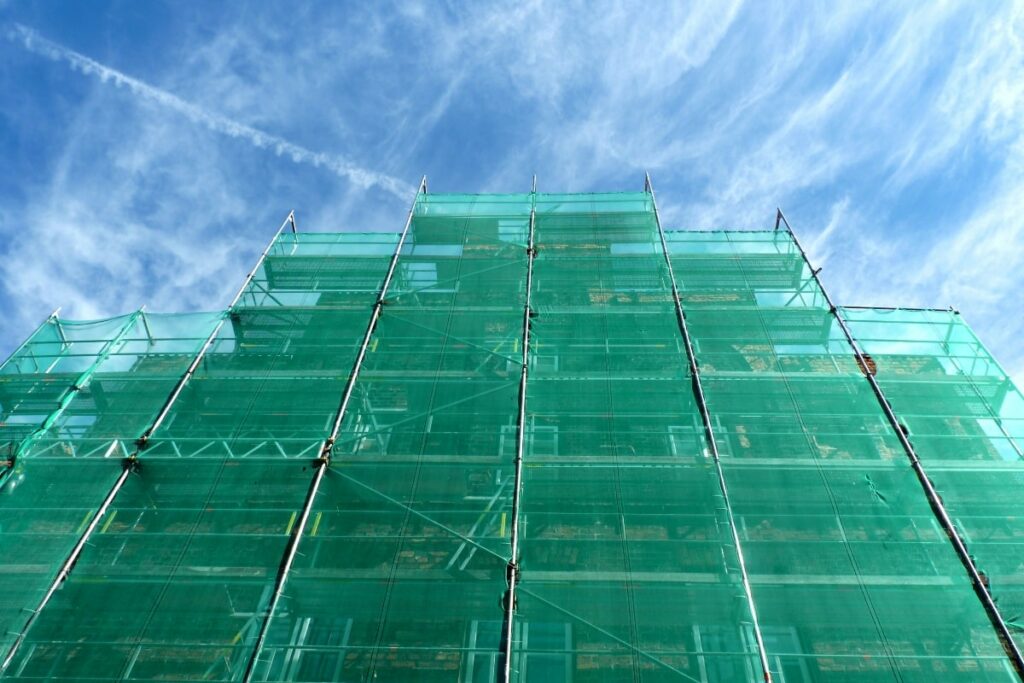
Key features and uses
- The high load-bearing capacity of steel scaffolding makes it ideal for projects involving heavy machinery or large construction materials.
- Galvanised steel scaffolding is also long-lasting and corrosion-resistant, making it suitable for use in environments where other materials might deteriorate quickly.
Best suited for
- Steel scaffolding is best suited for large construction projects, industrial sites, and projects where durability and strength are paramount.
- Its robust nature makes it the scaffolding for high-risk construction work and projects requiring edge protection and a strong support system.
Single scaffolding: Basic yet effective
Single scaffolding, also known as brick layer’s scaffolding, is a traditional type commonly used in brick masonry work. It provides basic support for construction workers, allowing them to safely access different levels of the structure.
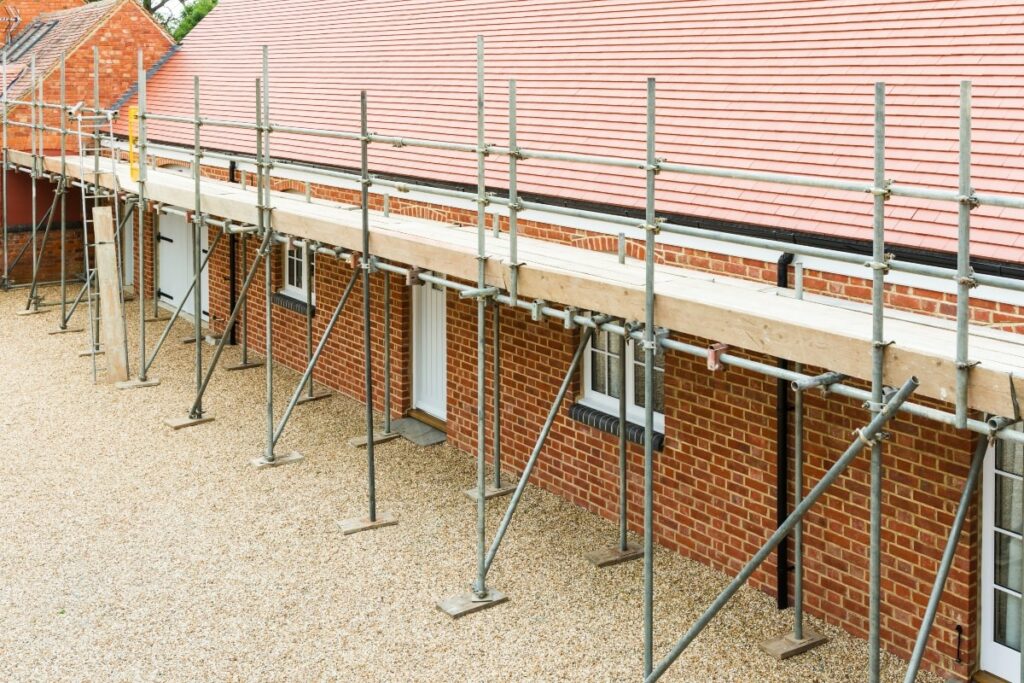
Key features and uses
- One of its key advantages is the simplicity of single scaffolding. It comprises a single row of standards, providing sufficient support for bricklaying tasks.
- Single scaffolding is easy to erect and dismantle, making it a cost-effective option for smaller projects.
Best suited for
- Single scaffolding is best suited for bricklaying, wall construction, and other small-scale projects where basic support is sufficient.
- Its straightforward design makes it a practical choice for tasks that do not require extensive scaffolding systems.
Double scaffolding: Extra support for stability
Double scaffolding, also known as mason’s scaffolding, provides additional support compared to single scaffolding. It features two rows of standards, offering greater stability and strength, particularly in stone masonry work.
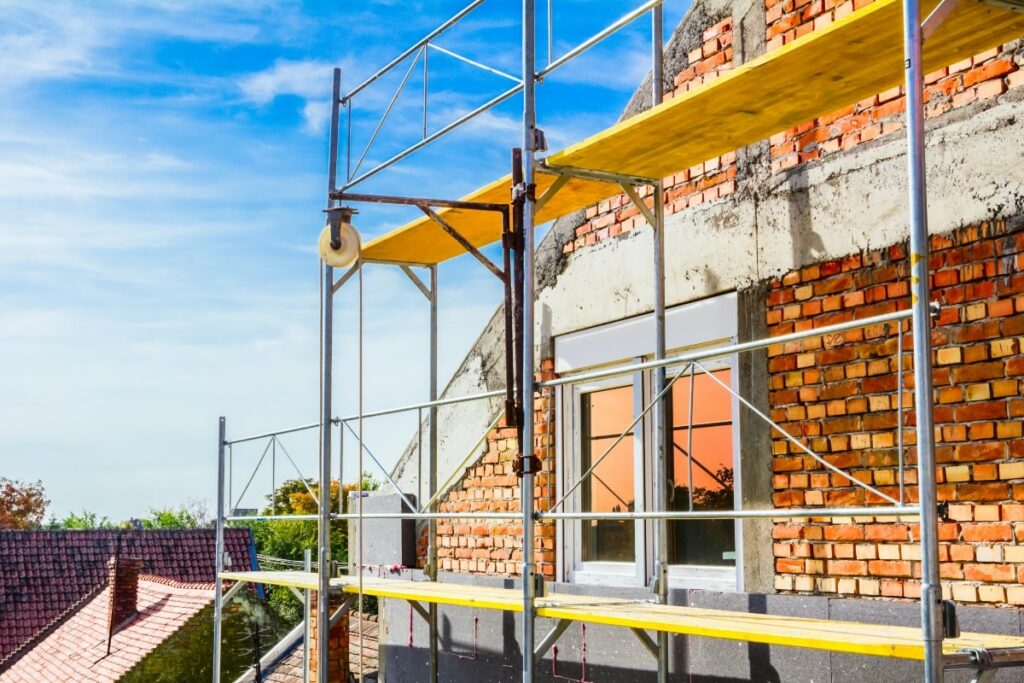
Key features and uses
- The dual-row design of double scaffolding provides extra stability, which is crucial for tasks that involve heavier materials or more complex construction processes.
- This type of scaffolding is commonly used in stone masonry, where additional support is needed to handle the weight and density of the materials.
Best suited for
- Double scaffolding is best suited for stone masonry projects or any construction work that requires extra strength and stability.
- Its enhanced support system makes it a reliable option for more demanding construction tasks.
Frame scaffolding: Common and convenient
Frame scaffolding is most commonly used in residential and commercial construction. Its modular design makes it easy to assemble and can be configured to suit various heights and building types.
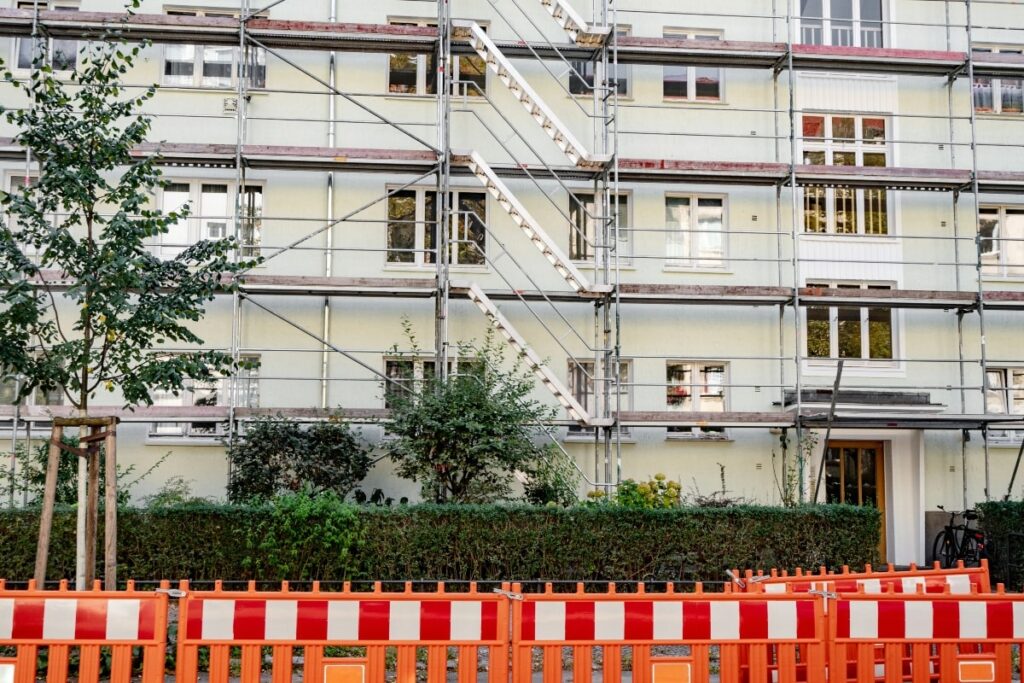
Key features and uses
- Frame scaffolding’s modular nature allows for quick and easy assembly, making it a popular choice for various construction projects.
- It can be used for low-rise and high-rise buildings, providing a flexible solution for different construction needs.
Best suited for
- Frame scaffolding is best suited for residential and commercial buildings, particularly for repair work, maintenance, and new construction.
- Its versatility and ease of use make it a go-to option for many contractors.
Mast scaffolding: Compact and efficient
Mast scaffolding is a type of mobile scaffolding that uses a mast to provide vertical access. It is compact and efficient, making it ideal for projects in confined spaces or where vertical movement is required.
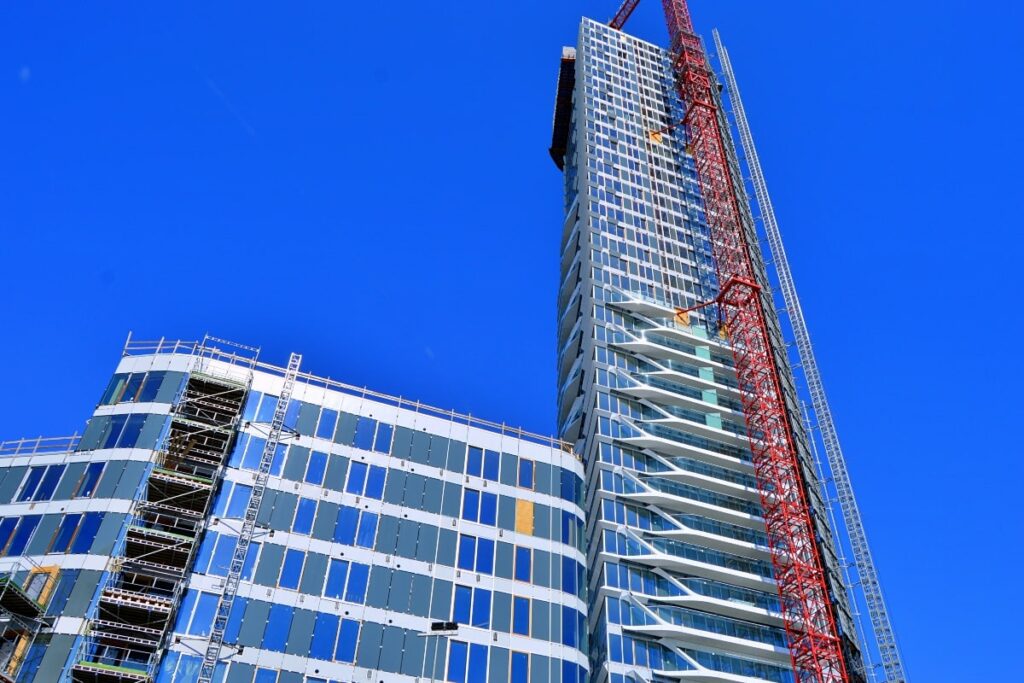
Key features and uses
- The compact design of mast scaffolding allows it to be used in narrow spaces where other types of scaffolding might not fit.
- It is particularly useful for vertical projects, where construction workers must move up and down along the structure without taking up too much space on the ground.
Best suited for
- Mast scaffolding is best suited for vertical construction, narrow buildings, and projects in confined spaces.
- Its efficiency in vertical movement makes it an excellent choice for high-rise construction in urban environments.
Modular scaffolding – Kwikstage: Modern and adaptable
Modular scaffolding, such as the Kwikstage system, is designed to offer flexibility and adaptability for various construction needs. Its modular design allows for quick assembly and easy customisation, making it suitable for complex projects.
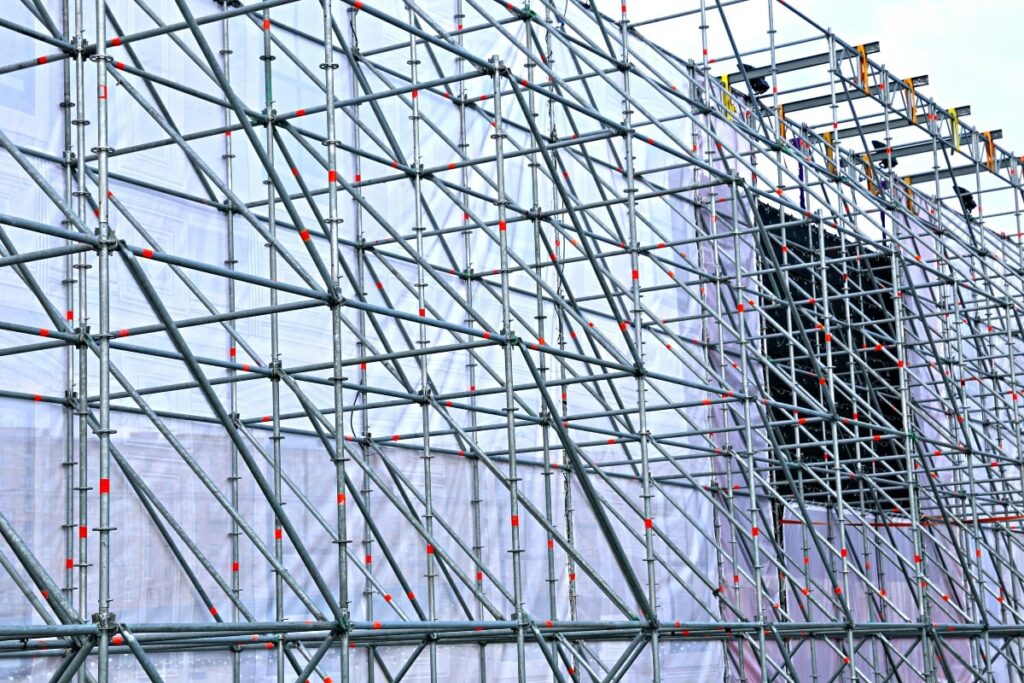
Key features and uses
- The key advantage of modular scaffolding is its adaptability. The Kwikstage scaffolding system, for example, can be customised to fit a project’s specific requirements, whether it involves varying heights, unique structures, or complex configurations.
- This type of scaffolding is also known for its durability and ease of assembly.
Best suited for
- Kwikstage scaffolding is best suited for complex construction projects that require a high degree of customisation.
- Whether you’re working on a large commercial building or a unique architectural structure, modular scaffolding provides the flexibility needed to accommodate different project demands.
Choosing the right scaffolding type for your project
Understanding the different scaffolding types is key to selecting the right one for your construction project. Each scaffolding type offers unique benefits and is suited to specific tasks and environments.
When choosing scaffolding, consider factors such as the structure’s height, the nature of the work, and the project’s duration. Safety must always be prioritised by ensuring the scaffold meets the necessary standards and regulations for scaffolding work.
Secure your project with the right scaffolding and temporary fencing
Choosing the correct scaffolding for your construction project is crucial for ensuring efficiency and safety when working at heights. Whether working on a small residential build or a complex commercial project, the right scaffolding can make all the difference. But safety doesn’t stop there—temporary fencing is vital for protecting your site, controlling access, and mitigating potential construction hazards.
Pairing your scaffolding with top-quality temporary fencing creates a safer and more secure environment for everyone involved. TTFS provides a wide selection of construction site accessories, including shade cloth roll, temporary fencing and barriers, all built to meet stringent Australian safety standards.
For expert guidance or a quick quote, contact our team at 1300 841 782. With nationwide delivery and depots in Melbourne, Sydney, Brisbane, Perth, and Adelaide, TTFS ensures you get the best service and prompt delivery every time.

